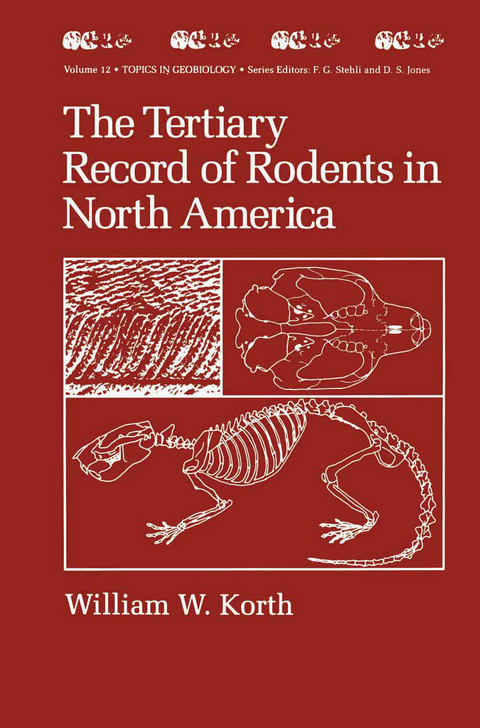
The Tertiary Record of Rodents in North America
Springer-Verlag New York Inc.
978-1-4899-1446-0 (ISBN)
Nearly half of the known species of mammals alive today (more than 1600) are rodents or "gnawing mammals" (Nowak and Paradiso, 1983). The diversity of rodents is greater than that of any other order of mammals. Thus, it is not surprising that the fossil record of this order is extensive and fossil material of rodents from the Tertiary is known from all continents except Antarctica and Australia. The purpose of this book is to compile the published knowledge on fossil rodents from North America and present it in a way that is accessible to paleontologists and mammalogists interested in evolutionary studies of ro dents. The literature on fossil rodents is widely scattered between journals on paleontology and mammalogy and in-house publications of museums and universities. Currently, there is no single source that offers ready access to the literature on a specific family of rodents and its fossil history. This work is presented as a reference text that can be useful to specialists in rodents (fossil or recent) as weIl as mammalian paleontologists working on whole faunas. Because the diversity of rodents in the world is essentially limitless, any monograph that included all fossil rodents would similarly be limitless. Hence, this book is limited to the re cord of Tertiary rodents of North America. The several species of South American (caviomorph) rodents that invaded North America near the end of the Tertiary are also not included in this text.
I • Rodents—What, Where, and When.- 1 • Introduction.- 2 • Specialized Cranial and Dental Anatomy of Rodents.- 3 • Origin of Rodents.- 4 • Classification of Rodents.- II • Systematic Description of Rodent Families.- 5 • Ischyromyidae.- 6 • Sciuravidae.- 7 • Cylindrodontidae.- 8 • Protoptychidae.- 9 • Aplodontidae.- 10 • Mylagaulidae.- 11 • Sciuridae.- 12 • Eutypomyidae.- 13 • Castoridae.- 14 • Eomyidae.- 15 • Heliscomyidae.- 16 • Heteromyidae.- 17 • Florentiamyidae.- 18 • Geomyidae.- 19 • Zapodidae.- 20 • Cricetidae—Part 1.- 21 • Cricetidae—Part 2 (Microtidae).- 22 • Monotypic Families.- 23 • Rodents Not Referable to Recognized Families.- III • Dynamics of the North American Rodent Fauna through Time.- 24 • Changes in the Rodent Fauna.- 25 • Tertiary Rodent Faunas of Other Continents.- References.- Taxonomic Index.
| Erscheint lt. Verlag | 31.7.2013 |
|---|---|
| Reihe/Serie | Topics in Geobiology ; 12 |
| Zusatzinfo | XIV, 320 p. |
| Verlagsort | New York |
| Sprache | englisch |
| Maße | 155 x 235 mm |
| Themenwelt | Naturwissenschaften ► Biologie ► Evolution |
| Naturwissenschaften ► Biologie ► Zoologie | |
| ISBN-10 | 1-4899-1446-3 / 1489914463 |
| ISBN-13 | 978-1-4899-1446-0 / 9781489914460 |
| Zustand | Neuware |
| Informationen gemäß Produktsicherheitsverordnung (GPSR) | |
| Haben Sie eine Frage zum Produkt? |
aus dem Bereich


